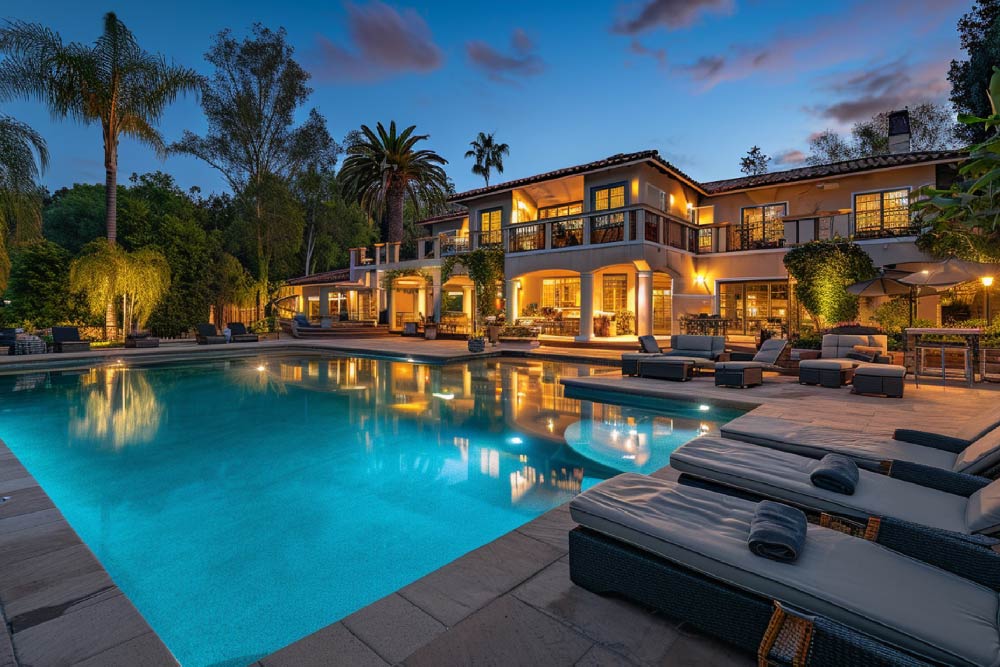
For the best real estate deals for people who are new to the city, Squarea has helped us understand the market and choose the right location to invest. Thank you Squarea!

For the best real estate deals for people who are new to the city, Squarea has helped us understand the market and choose the right location to invest. Thank you Squarea!

As climate pressures intensify and capital becomes more discerning, the real estate sector stands at a pivotal moment. No longer are sustainability credentials a value-add—they are fast becoming core to asset valuation, tenant attraction, and long-term resilience.
This World Environment Day, the spotlight is on real estate’s role in delivering decarbonization at scale. According to the International Energy Agency’s 2024 Global Buildings Tracker, buildings now account for 37% of energy and process-related CO₂ emissions worldwide. In India, where urbanization is accelerating, this figure underscores a critical truth: real estate can either amplify the climate crisis or actively mitigate it.
A shift is underway. What was once an ESG narrative led by compliance is now an investment imperative. The World Green Building Council’s 2024 Global Trends report reveals that green-certified buildings reduce operating costs by up to 14%, with rental premiums of 6–10% in Indian metros. Institutional investors are taking note. CBRE India’s 2024 Green Real Estate Outlook reports that 72% of investors now factor ESG ratings into acquisition strategies, and 63% of occupiers require green certifications for office space selection.
In Pune, one of India’s fastest-growing real estate markets, this transition is visible across asset classes. Premium residential projects like YOO Pune and YOO Villas, developed in collaboration with global design house YOO, have integrated sustainability into their architectural language. From passive solar design and energy-efficient systems to 5-acre rainforest and rainwater harvesting, these developments aren’t just aesthetic statements—they’re engineered for performance.
On the commercial front, buildings like EON IT Park, World Trade Center Pune, and Amanora Chambers have embraced LEED and IGBC ratings, focusing on air quality, daylight access, and reduced water usage. This isn’t just about being green—it’s about future-proofing assets for institutional-grade returns.
Even in new commercial development, the sustainability playbook is being executed with intent. Upcoming Grade-A developments, including Omicron Business Landmarks Kharadi NX, are integrating features like high-efficiency HVAC systems, daylight-responsive lighting, and climate-conscious landscaping. These aren’t superficial add-ons—they’re fundamental to asset longevity and lifecycle value.
What’s also changing is the role of landscape. No longer ornamental, green spaces are being engineered for thermal comfort, carbon sequestration, and even stormwater management. Think shaded public courts, rooftop rain gardens, vertical green walls—solutions that serve both people and planet, while also reducing long-term energy intensity.
The financial rationale for all this is clear. According to Knight Frank India’s 2024 ESG Report, commercial green buildings in India experience lower vacancy risks and up to 7% higher yields than non-certified assets. With REITs and institutional funds allocating more capital toward ESG-aligned portfolios, green buildings are quickly becoming the safer, smarter bet.
At the intersection of real estate and climate action, sustainability is now a proxy for value. It de-risks assets, meets rising regulatory standards, and aligns with stakeholder expectations—from tenants and investors to city planners and financiers.
As the built environment redefines its role in climate strategy, developers who integrate sustainability from day one aren’t just responding to a trend—they’re shaping the blueprint for future cities.

India’s commercial real estate sector is undergoing a quiet but powerful shift. While demand for Grade-A buildings, sustainable supply, and infrastructure-led locations continues, there’s a parallel priority that is becoming non-negotiable - Wellness. No longer a soft perk or a branding exercise, wellness is fast becoming the core lens through which commercial spaces are being designed, leased, and marketed.
As India’s commercial real estate market races towards a projected size of USD 106.05 billion by 2029, growing at a CAGR of 21.10% (Puravankara), this rising wave of wellness-centric workplaces signals not just a trend, but a transformation in how occupiers and investors define long-term value. To understand the emergence of wellness as a strategic priority, it is imperative to first identify the market forces and occupier expectations driving this shift.
The shift toward wellness-driven commercial spaces is not incidental. It is anchored in three powerful macro and behavioural changes.
These evolving priorities are altering how commercial assets are evaluated. As wellness moves to the forefront, it becomes essential to define what truly sets a health-focused workplace apart from conventional developments.
Wellness-focused commercial projects go beyond traditional aesthetics or green landscaping. They are built around human-centric principles with measurable impact on health, comfort, and performance. Wellness-focused workplaces include:
These features go beyond design, they directly address what today’s occupiers expect and can lead to measurable returns. It is important to assess how wellness integration is influencing both asset performance and tenant experience.
The integration of wellness is not just a peripheral upgrade, it is emerging as a key performance driver for commercial real estate assets. Across markets, wellness-certified developments are demonstrating stronger leasing traction, longer tenant retention, and higher investor confidence (Business Standard).
With the performance advantages clearly established, wellness is no longer positioned as an optional add-on. The next phase of market evolution will see it embedded into core real estate strategy, both as a competitive differentiator and a resilience-building lever.
This redefinition is particularly relevant in a high-growth market like India. As the sector moves toward a USD 106 billion valuation by 2029, wellness-focused assets are expected to lead on rental premiums and become central to institutional investment strategies.
At SQUAREA, we identify and enable access to India’s most forward-looking commercial assets, projects that integrate wellness, ESG, and grade relevance to deliver future-ready performance. To explore wellness-aligned commercial investments that meet global benchmarks and rising tenant expectations, write to us at hello@squarea.io or call +91 90 9641 9641. Let’s align your portfolio with the next chapter of workplace evolution!

In today’s ultra-luxury real estate landscape, it’s not just the location that defines value, it’s the designer behind the door. From haute couture to high design, the world’s most celebrated creative minds are now reshaping how the wealthy live, invest, and experience space.
Branded residences, featuring names like Philippe Starck, Giorgio Armani, Missoni, and Fendi, are no longer niche indulgences. They are aspirational, globally aligned investments where design, service, and scarcity intersect. These homes promise more than just aesthetics, they offer a lifestyle that mirrors the sophistication of their creators. Globally, the appetite for such curated luxury is accelerating and is fast becoming the benchmark for luxury real estate.
High-net-worth individuals (HNWIs) and ultra-high-net-worth individuals (UHNWIs) today are more discerning. For them, the brand story, design integrity, and curated experience hold centre stage. This has propelled the rise of branded homes.
Across the globe, over 105,000 branded residential units are spread across 750 projects. By 2027, this number is expected to grow by nearly 60% to 1,200 developments, driven by rising demand for curated luxury living (Noesis Capital Advisors). This surge is not just about expansion, it reflects a shift in how design-led living is influencing long-term investment thinking.
Here’s what makes these branded homes so compelling today:
These homes command nearly a 30% markup compared to non-branded peers, underlining the significant pricing power and investment confidence they attract (Savills). This growing preference is not rooted in aesthetics alone, it reflects a deeper alignment with the design language and brand philosophy of globally celebrated creators. It is this creative influence that is now shaping the most iconic residential addresses worldwide.
From London to Dubai to Miami, these designers have set benchmarks in how art, design, and living come together under one roof.
Starck brought a distinct design sensibility to Yoopune, blending modern interiors with landscaped open spaces. His philosophy of design continues to influence branded residential designs in India across Pune and Bhubaneswar.
A masterclass in understated glamour, Armani's influence can be seen in the clean lines, neutral palettes, and meticulous detailing that transform these residences into timeless sanctuaries.
Celebrating colour, pattern, and fashion-forward elegance, Missoni’s Miami project redefines waterfront luxury through a distinctly Italian lens.
These residences reflect sophistication, with every interior element crafted to echo the brand’s Roman heritage and artisanal finesse.
One of the most prestigious addresses globally, this project combines cutting-edge architecture with Mandarin Oriental service, creating an unrivalled luxury benchmark in urban living.
Located on Jumeirah Bay Island, these homes integrate Italian design tradition with Middle Eastern opulence, curated by the Bulgari brand and offering private marina access.
In the heart of Manhattan, these residences bring the hospitality giant’s legendary service into full-time ownership, appealing to global citizens who seek familiarity in high-touch living.
This global momentum is no longer confined to traditional luxury hubs. India is emerging as a compelling destination in the branded real estate landscape, backed by rising affluence, global brand entries, and evolving investor priorities.
While India currently holds just 3% of the global branded residences market, it is poised for significant expansion. As per Noesis Capital Advisors, the number of branded residential projects in India is expected to grow significantly in the near future. This momentum is driven by a new generation of HNIs and UHNIs who view luxury real estate as a strategic tool for wealth preservation and global alignment
While this growth is pan-India, some regions have emerged as frontrunners in adopting and shaping the branded residence landscape:
Established branded residence markets in India
Emerging hubs of branded homes in India
From Starck to Armani, today’s most influential designers are redefining the global luxury real estate landscape. At SQUAREA, we specialise in identifying branded residences where design excellence is matched by long-term investment merit. Whether you’re securing a signature address in Mumbai or entering an emerging market like Bhubaneswar, our advisory-led approach ensures each acquisition aligns with your financial vision and portfolio goals.
To explore India’s and Dubai’s most compelling branded residences shaped by the world’s top designers, reach out to us at hello@squarea.io or call
+91 90 9641 9641.